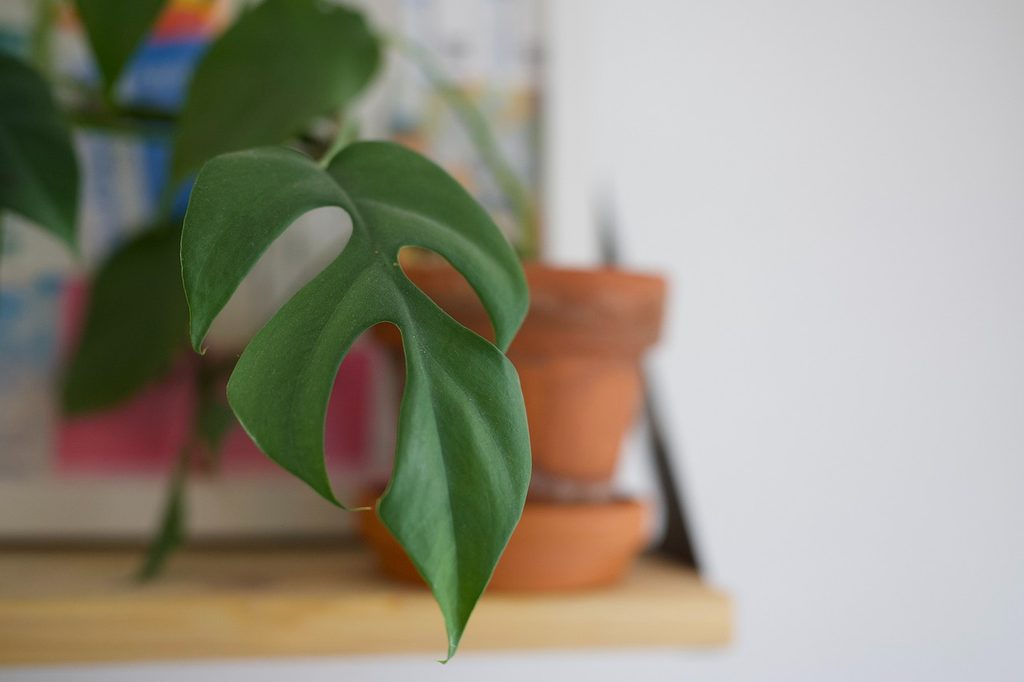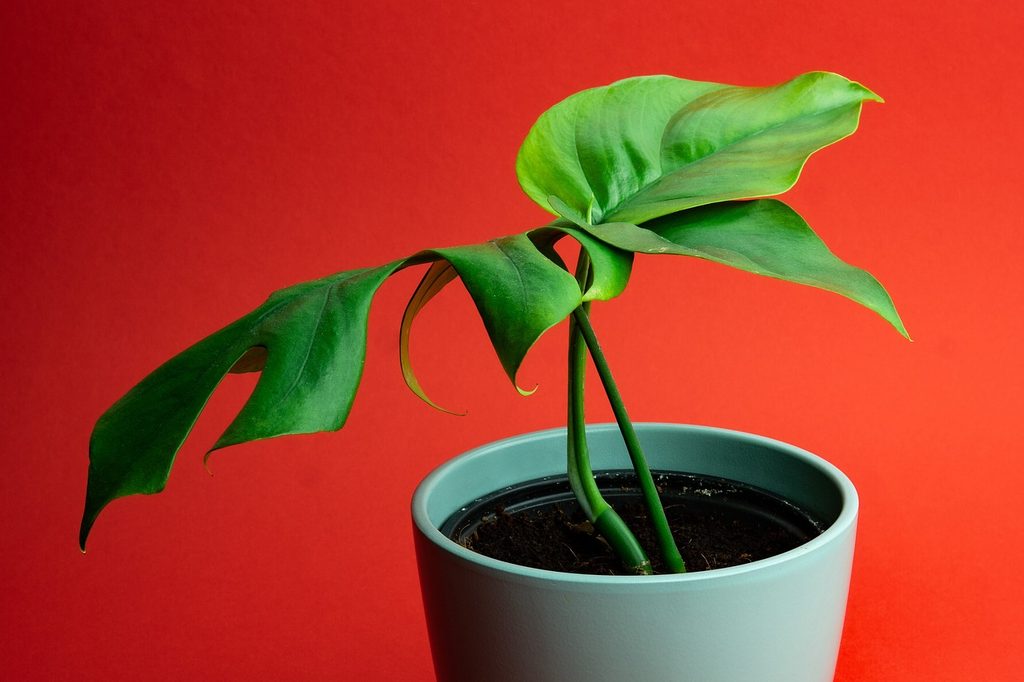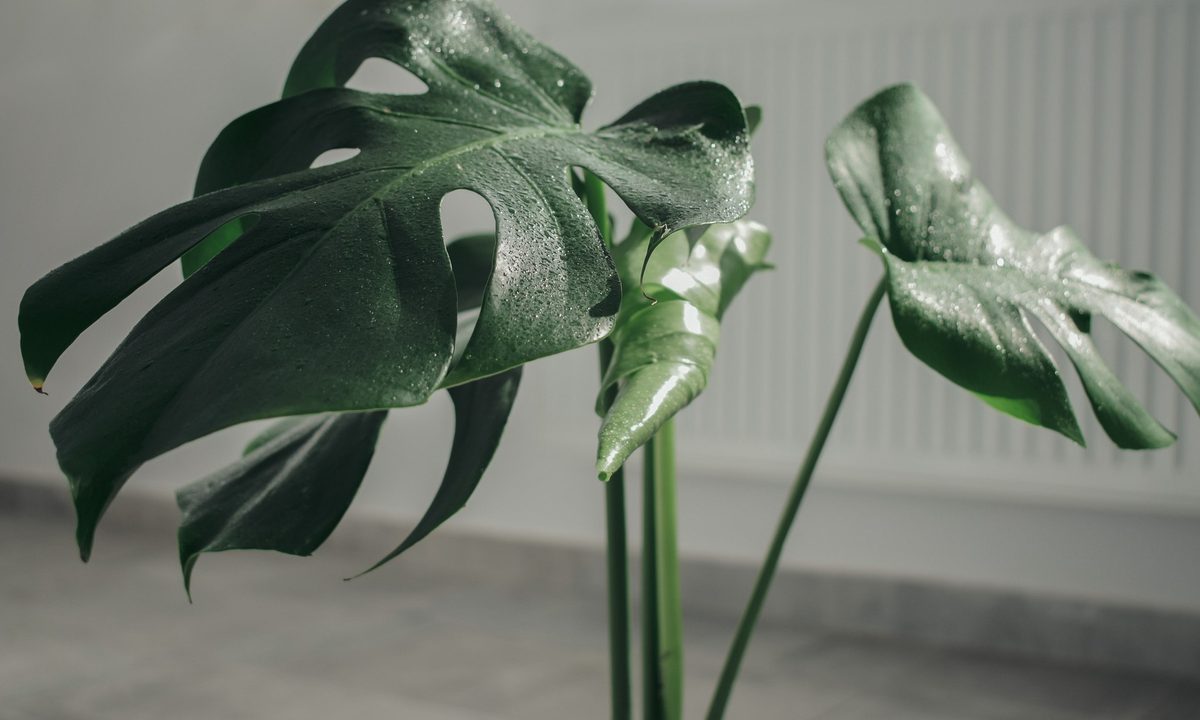Monstera leaves are an iconic shape that almost anyone could recognize, even if they aren’t plant parents. While the monstera is a beautiful plant, you might be looking for another option that’s similar but not quite as… monstrous. That’s where mini monstera, or Rhaphidophora tetrasperma, comes in.
This plant looks incredibly similar to monstera plants, and it even has similar care requirements! Wondering what the difference is between these two plants and how to care for your own mini monstera? We’ll answer all your questions in the simple guide to mini monstera care!
What is a Rhaphidophora tetrasperma?

The Rhaphidophora tetrasperma is native to Thailand and Indonesia and is a small vining evergreen that will add a bit of rainforest greenery to your home. This plant is also known as a mini monstera, dwarf monstera, or philodendron ginny, and it looks like a mini version of a Monstera deliciosa — hence the nickname. While its nicknames all include monstera or philodendron, it’s important to note that this plant is neither of those. However, it is related to them! It is part of the Araceae or Arum family, which includes monstera, philodendron, rhaphidophora, and even peace lilies.
The mini monstera is a fast-growing plant with fenestrated leaves that feature a bright green color. They’re vining plants and will gladly grow up a trellis or moss pole to add vertical interest to your houseplant collection.
How to care for a mini monstera

Now that we know more about the Rhaphidophora tetrasperma, let’s talk about what it needs to thrive.
Water
Watering is the area of plant care that plant parents mess up the most. It’s hard to get right, especially for a plant like the mini monstera, which likes its soil moist. We encourage you to use a moisture meter to measure the amount of moisture in the soil more accurately so you can know when to water the plant. This will help you avoid overwatering the Rhaphidophora tetrasperma and keep your plant living a long and healthy life.
Water the plant when the top of the soil is dry to the touch or when the moisture meter gauge is reading at the dry end of the moist section. It will be critical not to overwater this plant since it likes its soil moist. Without the moisture meter, you might find it hard to find the right balance between moist and soaked.
Light
The mini monstera prefers bright indirect light; however, it will tolerate some direct sunlight. Just be careful because too much direct sunlight will turn the leaves yellow or, worse, cause them to sunburn and die. To avoid this, you can place them next to a window with a sheer covering to allow light to filter through but protect the leaves from the sun.
Food
The mini monstera likes to be fed up to three times a month during the growing seasons. Find a balanced and gentle fertilizer to use on this plant and watch its growth skyrocket with each feeding.
Temperature
The typical household temperature of 65 to 80 degrees works perfectly for the mini monstera. They don’t like extreme temperatures in either direction, so you’ll also want to avoid drafty doors, windows, and air vents.
Humidity
This is where the care for a rhaphidophora tetrasperma is a bit trickier than other plants. These thrive in higher humidity, around 60 percent, and will most likely need a humidifier in the room. Most homes sit around 30 to 40 percent, and while the plant will survive, it will not thrive.
Toxicity
Unfortunately, the rhaphidophora tetrasperma is toxic to humans, dogs, and cats. Signs that your pet has ingested this plant are oral irritation, excessive drooling, vomiting, and mouth irritation. While these symptoms rarely lead to death, you’ll still want to keep everyone in your home safe by keeping this plant where animals and children can’t reach it.
Common issues
The dwarf monstera is known to suffer from spider mites. These tiny pests create webs on the underside of the leaves and will slowly kill your plant if not dealt with. You can hose down the plant to wash the pests off or use a safe insecticide like neem oil to get rid of these nasty little creatures.
Additional care
For this plant to be happy, we suggest growing it on a trellis, totem, or moss pole. This way, the vines are adequately supported as they would be in the wild, and the leaves can get the optimal amount of sunlight and grow bigger and healthier leaves.
How to tell if you have a true monstera or a mini monstera

If you’re looking at your houseplants and wondering if they’re really mini monsteras or not, then here’s how to tell the difference. True to their name, mini monsteras are smaller than true monsteras, but not just in height! Their leaves also don’t get nearly as large as their cousins the true monsteras. You can also tell by looking at the patterns of fenestrations on the leaves. Mini monsteras tend to develop their holes sooner than true monsteras, and true monsteras come in a much wider range of patterns.
Additionally, while monstera flowers are rare indoors, they do occur and resemble peace lily or arum lily flowers. Mini monsteras will also occasionally flower, but their flowers tend to be much smaller. Overall, size is key. If you aren’t sure which plant you have, the best test is to patiently wait and see how large it grows!
When you finally find your Rhaphidophora tetrasperma, you’ll want to be sure you can not only keep it alive but provide it with the care that will allow it to thrive. Use these tips and maybe invest in a moisture meter if you don’t already have one.



